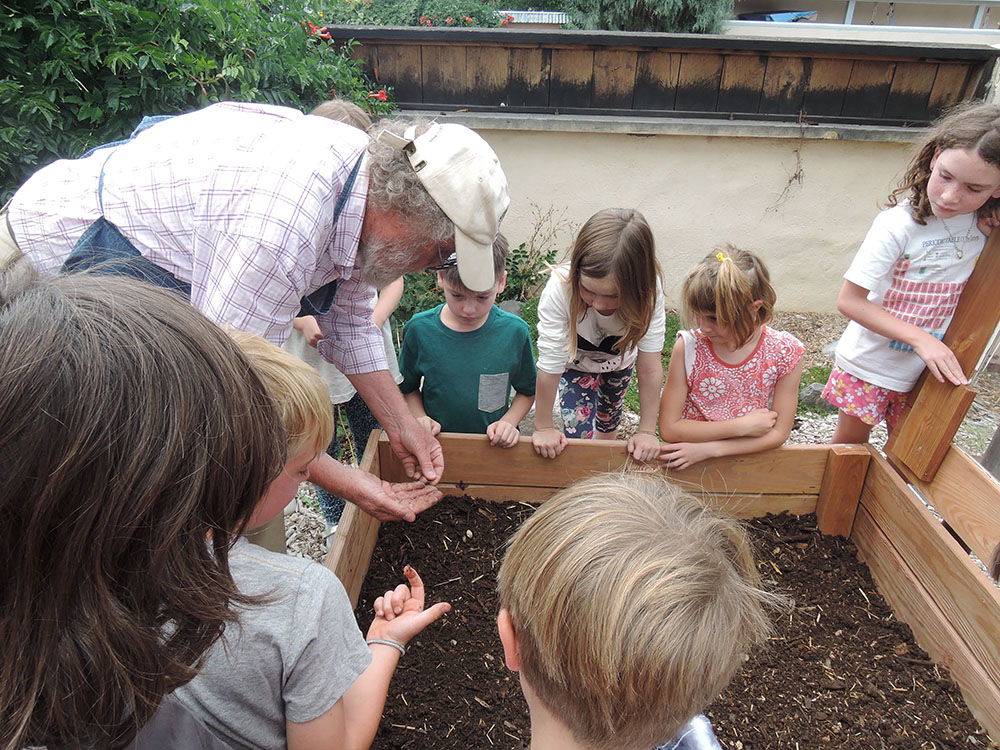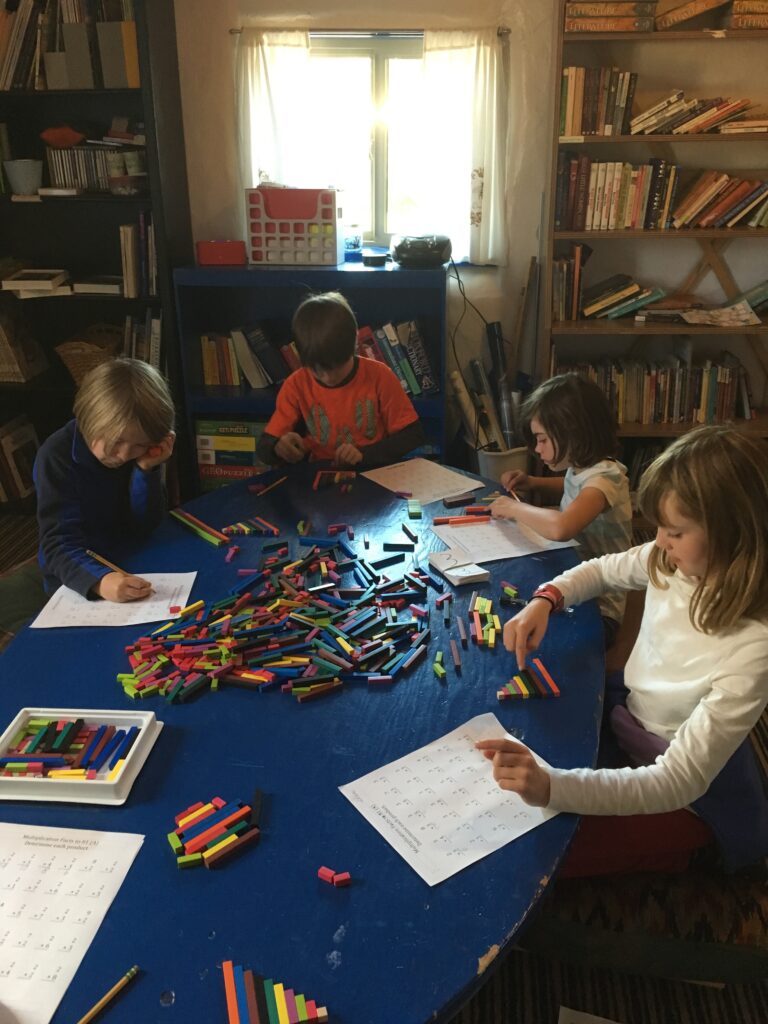Curriculum
Our students, ages five through twelve, are divided between a kindergarten and three multi-age classes based on levels of neurological development. The curriculum is constructed to match the different ages. Piaget was correct when he stated that children are not simply little adults. They actually perceive the world in different ways at different ages.

Our youngest mixed-age class, the Minis, ages six through eight, spend more time in play and integrative games than the older ones. A strong foundation makes for later academic ease and success. In the classroom, jigsaw puzzles, logic games, boxes of crayons and counting blocks dominate the room. The Minis work on writing, language arts, reading and basic math operations, at his/her own level and pace, with plenty of teacher support.
Munchkins are those students ages eight to ten. The curriculum supports their need to increase their proficiency with words and numbers. Mathematics is anchored on mastery of flash card facts and continues into the theories of fraction and decimal numbers. Reading, writing, and a good dose of grammar help solidify their literacy foundation. Science, geography, and history are approached in an integrated manner.
The Bigs are aged ten through fourteen. Their rigorous curriculum prepares them for higher education. Seminar lecture-discussion sessions on history and world religions; interactive worksheets created in-house, lectures on chemistry and physics; study of three languages, Latin, Greek, and Chinese; mathematics including Algebra create a confidence and proficiency for advanced education. Poetry, a Shakespeare play, singing, art, yoga add breadth to the curriculum.
The school day cycles through periods of academic focus, alternated with breaks for food chats with friends and physical activity. We play outside every day, either with a group game or building physical skills.
After interacting with children’s natural rhythms for several years, we settled into the pattern of academic activity and change of focus that we still use. The first ten weeks of the year are devoted to integrating new students in the classes and working at 80% of maximum effort. During the next seven weeks, we spend no time on academics. Parents take over classes for a week of projects as varied as pottery, poetry, and cooking in the classroom.
We all enjoy a week’s vacation for Thanksgiving. Our return brings three weeks of crafts and singing Holiday songs, followed by two weeks of vacation. For new parents this academic hiatus is a leap of faith; for the students, it provides a strengthening of their neurology, a break from the three R’s and of course, much fun.
We are all now primed for the HNW, the Hard Nine Weeks, where students and teachers work at slightly over maximum capacity. Another Parents’ Week and Spring Break lead to the final ten weeks of the school year when work slowly tapers off and more creative pursuits take place. This rhythm optimizes learning and leaves each student with a memory of a great school year and a deep cache of things learned and experienced.
At Fayette, our goal for each student and teacher is to awaken integrated intelligence. By that we mean to have both brain hemispheres, both eyes, both ears, left and right side of the body, top and bottom of the body working together while in motion, or thought, while in a group or alone.
Brain Gym, an integrative ball bouncing program, tumbling, walking on balance beams while counting numbers and similar programs lead toward wholeness. If a student has trouble learning to read or master multiplication facts, more time is spent in the studio, not simply pounding letters and numbers.
Our curriculum and community assist young scholar-citizens to better know themselves, interact in harmony with others, and become ever more grounded in successful strategies for future academic achievement and joy of life.

